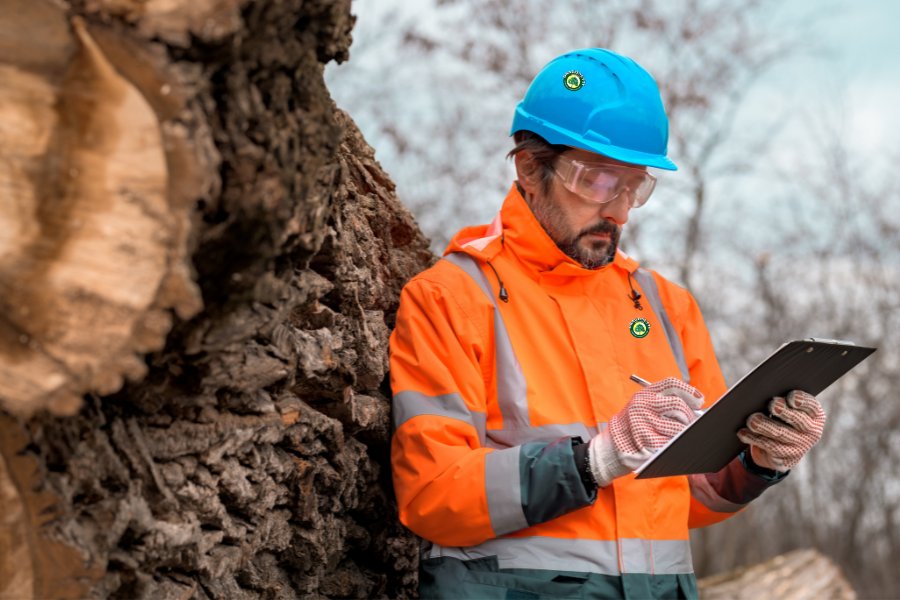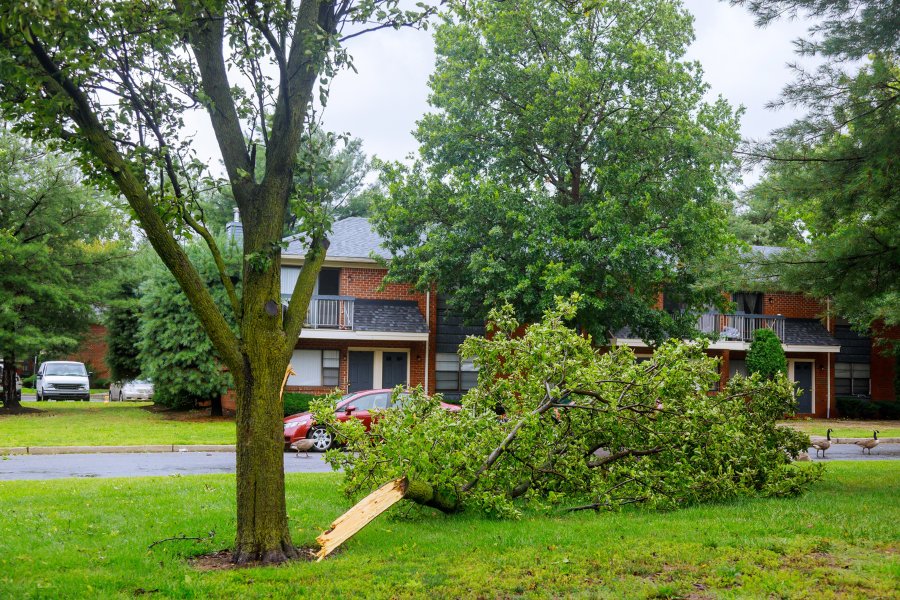Do you have concerns about a tree on your New York property? Unseen issues can turn a tree into a serious hazard for your home, family, or anyone nearby. At Dragonetti Tree Removal, we specialize in professional Tree Risk Assessment in New York. We are TRA certified arborists in New York, giving us the green light to thoroughly inspect your trees and help you make smart choices about their safety. We conduct all types of assessments, from initial visual checks to more detailed investigations.
What is a Tree Risk Assessment?
A Tree Risk Assessment (TRA) is like a health check-up for your trees. It’s a careful, organized evaluation performed by a qualified tree risk assessor. Our main goal is to determine if a tree, or any part of it, might fail and what the consequences of that could be. These assessments often happen before a removal or professional tree pruning services.
This specialized work can and must only be carried out by TRA certified arborists, who have specific training in tree risk assessment. We are proud to be qualified tree risk assessment certified arborists, a qualification from the International Society of Arboriculture (ISA). This means our team has completed the training and passed their exams.
Why a Tree Risk Assessment is Important
Getting a professional tree risk assessment offers lots of advantages beyond just the health of your trees. It’s about protecting your property, managing costs, and saving the trees if we can.
- Protection: Our assessments help lower the chance of tree failure, especially during severe weather. We will inform you about any dangers we see with a plan to fix them.
- Tree Preservation: Finding problems early makes them much easier to address, often allowing us to save the tree. We always prefer to treat and preserve trees whenever possible.
- Reducing Your Liability: As a property owner, you are responsible for the safety of your property. Neglected trees can lead to damage and legal issues if they fall or cause injury, which will be your responsibility. It’s good to get ahead of any issues, and we can answer any questions you have about this.
Our Tree Risk Assessment Process
During these assessments, we carefully examine many aspects of your tree: its overall health, any structural defects like cracks or weak branches, signs of decay or disease, the condition of its root system, and even factors like soil or its proximity to buildings, or if a tree is too close to your home. When we perform a tree risk assessment, we follow a systematic process based on industry standards.
Level 1: Limited Visual Assessment
This is an initial scan, often done from a distance. We look for obvious signs of risk to help us prioritize which trees might need a closer look. This is when we would be able to see something quite obvious (to us).
Level 2: Basic Tree Risk Assessment
This involves a more detailed, ground-level inspection. We walk around the tree, looking closely at its health and stability from all angles. We check for visible signs of decay, disease, and structural problems. This is where we gather the information for your detailed tree risk assessment report.
Level 3: Advanced Tree Risk Assessment
For trees with significant risk or those needing a deeper analysis, we use advanced diagnostic tools. This might include specialized equipment to look inside the tree’s trunk for hidden decay, or to examine its root system. These tools help us uncover issues that aren’t visible from the outside.
Understanding Tree Risk Level
After our tree risk assessment, we categorize trees into clear risk levels. These categories help you quickly understand your tree’s condition and decide on its future care.
Here are the four main risk categories we use:
Risk Category: Negligible
Likelihood of Failure: Very unlikely to fail, even during harsh weather.
Description: Robust trees exhibiting no apparent signs of structural weakness or branch loss.
Suggested Action: Conduct routine checks, maintain standard care practices.
Risk Category: Low
Likelihood of Failure: Not expected under typical conditions, but could occur in severe storms.
Description: Generally sound, though minor issues may be present. Could be impacted by extreme winds or heavy ice.
Suggested Action: Regular observation, consider proactive maintenance.
Risk Category: Moderate
Likelihood of Failure: Likely to fail, anticipated relatively soon under normal conditions.
Description: Displays clear indicators of potential failure, such as noticeable cracks, decay, or pest activity.
Suggested Action: Schedule intervention (e.g., pruning, bracing, treatment, or removal) at your earliest convenience.
Risk Category: High
Likelihood of Failure: Immediate risk of failure, even without adverse weather.
Description: Exhibiting severe signs of decline, extensive internal rot, or major structural damage. This is the most urgent classification.
Suggested Action: Urgent action is necessary, often involving emergency removal to ensure safety.


